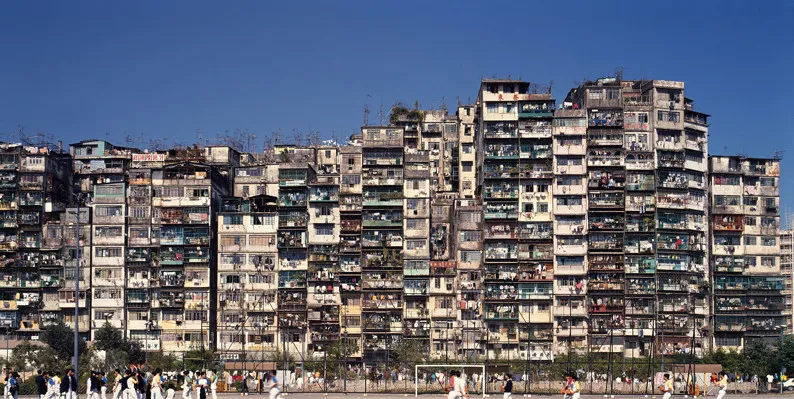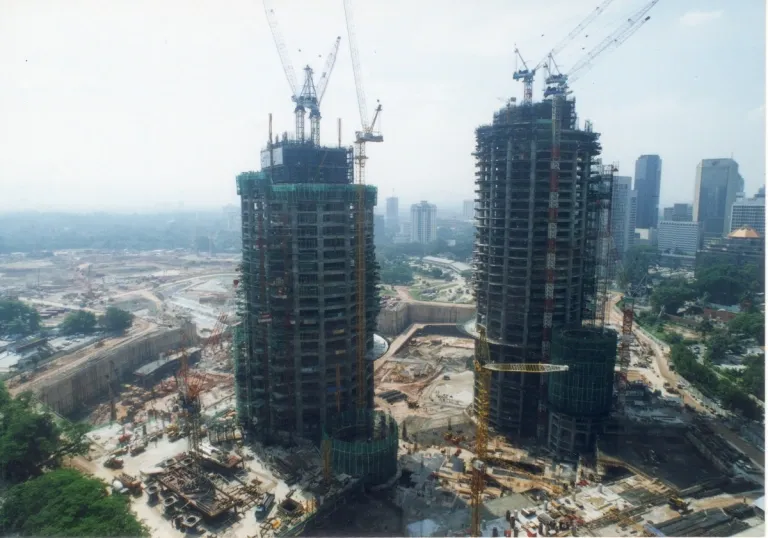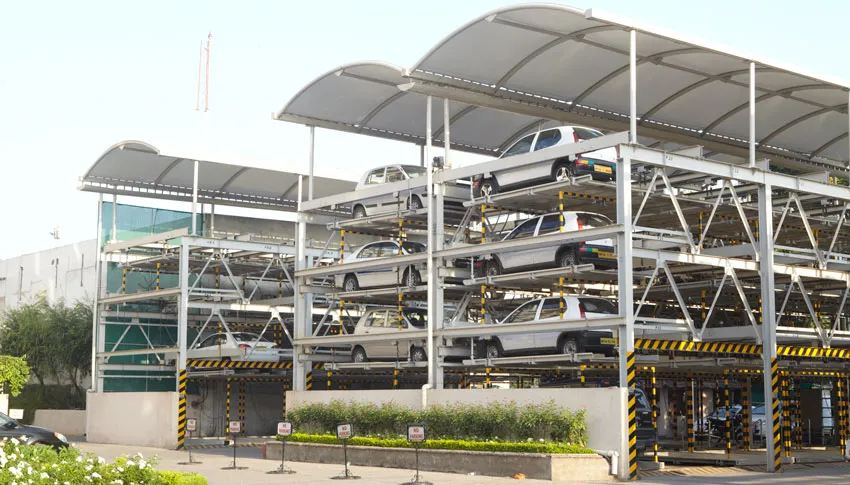If you want to know about the technical challenges for tall building or definition and evolution of tall building or history of tall building, please click the link.
Tall buildings have a significant impact on our cities and communities. Some of the impacts are positive, while others are negative.
- Impact of tall buildings on Urban Development in terms of increased density, accessibility, transportation and parking; Ownership, management, and maintenance.
1) Urban density

- Urban density is a term used in urban planning and urban design to refer to the number of people inhabiting a given urbanized area.
- As such it is to be distinguished from other measures of population density. Urban density is considered an important factor in understanding how cities function.
- Research related to urban density occurs across diverse areas, including economics, health, innovation, psychology and geography as well as sustainability.
- Cities are economic drivers – the very core of economic growth and development. Higher earnings paid to urban workers and premiums paid by firms to be in urban areas are evidence of cities’ productive advantages.
- In the US, for example, earnings in cities are around 33% more than those in non-urban areas (Glaeser and Mare, 2001).
- Scale and density – essentially what make a city a city – have long been thought to be connected to these productive advantages. Ability to offer a critical mass of highly qualified labour, support services, information, infrastructure and markets have all been linked to urban competitiveness and economic performance.
The ways in which density is linked to productivity has been developed in a wide array of research projects, largely fitting into the following categories:
- Denser areas allow a higher degree of specialisation, increasing efficiency .
- Reduced transport time and costs for products/goods/services from one stage to the next or from producer to consumer occurs in denser areas if the transport infrastructure is sufficient .
- Increased density increases the prevalence of knowledge spill overs, increasing innovation.
- Denser areas allow firms to have access to larger markets of suppliers (especially labour supply) and consumers, allowing competition to enhance the quality of inputs and outputs .
- Efficiencies of scale are created in denser markets where suppliers are reaching more potential customers .
- Reduced land take in denser areas, allows more economic activity to take place on a fixed piece of land than less dense designs .
- The ongoing trend for constructing tall buildings around the world reflects the increasing impact of global competition on the development of the world’s major cities.
- These cities compete on the global stage to have the title of tallest building with which to announce the confidence and global stature of their growing economies.
- An iconic tall building enhances the global image of the city. It is likely to put the city on the world map, thereby signalling and promoting its significant economic progress and advancement.
- Political leaders have supported constructing tall buildings to present their countries as emerging global economic powers.
- For example, Prime Minister Mahathir Mohamad of Malaysia publicly and strongly backed the building of the then tallest building in the world, the Petronas Towers in Kuala Lumpur, as a symbol of Malaysia’s entry into the global economy.

- Likewise the ruler of Dubai had enormous influence in transforming it from a fishing town to a world-class commercial city with the construction of sky-hugging ultra-tall buildings including the Burj Khalifa and other towers
- In some parts of the world, globalization has immensely promoted local economy and consequently the construction of tall buildings.
- The City of Shenzhen, China, for example, was a small fishing village in the 1970s. Due to global forces and rapid foreign investment, it was transformed to a modern city of skyscrapers with a supertall tower like Shun Hing Square, one of the tallest in the world, dominating the Shenzhen skyline to compete with the nearby towers of Hong Kong.
- Foreign nationals have invested billions of dollars for building factories and forming joint ventures.
- It now is reputedly one of the fastest growing cities in the world and is one of the most successful Special Economic Zones (SEZ) in China.
3) Urban agglomeration
- Tallness of buildings is also a matter of agglomeration in business districts.
- Clustering of tall buildings fosters urban synergy among the diverse activities and specialized services.
- The high concentration of activities creates “knowledge spillovers” between firms in the same sector and across sectors that lead to increased innovation.
- In a denser and varied environment, knowledge can spill into unintended fields, and a significant share of knowledge transfer occurs informally.
4) Urban design models
- Author Al-Kodmany, 2016 identified number of Urban Design models to integrate tall buildings with the metropolis. Some of these are mentioned below-
Tall buildings in the downtown (tb-dt)
- Tall buildings in a clustered form – defining city’s poly-focal skyline.
- Strong identity and improved imageability.
Tall buildings and major highways (tb-mh)
- Locating Tall buildings along major highways, interstate exchanges for taking advantage of transport infrastructure.
- We thus see many offices, Government buildings, Hospitals, Hotels along major highways.
Tall buildings & shopping malls (tb-sm)
- Usually located away from the central city and near the intersections of the highways at the urban periphery.
- Shopping Mall acting as a spatial anchor for Tall buildings.
- Without a proper Urban design regulation, development and height variation of Tall buildings can be haphazard.
5) Tall buildings and the T.O.D (transit-oriented development) model
- In urban planning, a transit-oriented development (TOD) is a type of urban development that maximizes the amount of residential, business and leisure space within walking distance of public transport.
- A TOD typically includes a central transit stop (such as a train station, or light rail or bus stop) surrounded by a high-density mixed-use area, with lower-density areas spreading out from this centre.
- A TOD is also typically designed to be more walkable than other built-up areas, through using smaller block sizes and reducing the land area dedicated to automobiles
- TALL BUILDINGS increase Ridership. This is needed to sustain mass transit services.
- The need for vertical density within these areas is emphasized by the fact that much of this area is already occupied by foot and auto-traffic networks (roads, parking, drop-off and pick-up areas, sidewalks, walkways etc) ground-level retail, the station itself and open areas required to accommodate flow of traffic in and out of the station.
6) T.O.D. (transit-oriented development) and mixed use development
- Tall Buildings can support mixed use developments by creating a larger and more immediate consumer base for shops and businesses.
- This model decreases automobile use and therefore, reduces traffic congestion and environmental pollution.
7) Management and operations tall buildings
- Architecture quality impacts leasing, management and operations of Tall Buildings.
- The goals of the owner who views the Tall building as a major investment includes maximization of revenues, minimization of operating expenses and increase in asset value.
- For Developers and corporations, primary motivations for building highrises are positive cash-flow, tax benefits, appropriation of property and pride of ownership.
- Management of a tall building is frequently delegated by the owner to a management company.
- The building managers responsibilities include Budget Planning, long-term strategic planning, space allocation, reporting on operation plans, variances and municipal requirements, staff, repair and leasing, providing security and life safety.
- Usually, interpretations of complex design drawings or any repairs or upgrades of public spaces require the services of the architect.
- Architect’s services are also needed in these areas: life safety, city regulations, maintenance and enhancement.
8) Urban transport & tall buildings
- A comprehensive review of dozens of studies, published by the Urban Land Institute, uncovered that since 1980, the number of miles Americans drive has grown three times faster than the population and almost twice as fast as vehicle registrations.
- The researchers conclude that one of the best ways to reduce carbon emission is to build compact places where people can accomplish more with less driving.

- A good network of roads, coupled with an efficient public transportation system, contributes to the “working efficiency” of cities through reduction in commuting cost, travel time, traffic congestion, and air and noise pollution.
- Public transportation projects lead to changes in land use and help intensify development. Similarly, changes in zoning lead to changes in the demand for transportation.
- By and large, vertically configured buildings facilitate more efficient infrastructure.
- Therefore, tall buildings can play an important role in creating sustainable cities.
- Simply put, a 500-unit single-family subdivision requires many more roads, sidewalks, sewers, hydro lines, power and gas lines, light standards, fire hydrants, etc., than that of a tall building, which allows integrating these systems efficiently in a dense manner.
- The researchers conclude that one of the best ways to reduce carbon emission is to build compact places where people can accomplish more with less driving.
- Compact development reduces driving from 20% to 40%
- Sustainability promotes compact urban living and density is viewed as a tool to create more sustainable city.
9) Tall buildings & parking

- Increase in Urban density comes with a premium – provision for car parking.
- Without a highly efficient, 24 x 7 public transport system, it is difficult to change the sense of importance people attach to personal car ownership. Otherwise, increasing F.A.R. Will increase ECS and the situation will worsen in urban areas (even if the ECS figure remains unchanged).
- Solutions are limited and known to us all. Surface parking is close to impossible in cities like Mumbai.
- It is either basement (which has its limitations in terms of number of stories), or MCP or AMCP.
- Drastic measures will affect the Automobile Industry.
- The majority of parking for the residents of high-rise projects should be provided underground or in above ground structures (parking garages).
- Surface parking for visitors should be developed at the side or rear of the building and be well landscaped.
- Parking garages should be designed with residential, commercial or community uses at a grade to provide for active frontages.
Overall, the impact of tall buildings depends on their design, location, and context. When planned and executed well, tall buildings can provide numerous benefits to our cities, but if not done carefully, they can also have negative impacts.